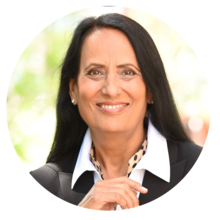About this Presentation
Make-to-stock (MTS)/ Availability (MTA) environments provide clear priority to the plant most of the time, however cases can arise where demand can outstrip available supply. This presentation will demonstrate the solution to retaining a common % Buffer Remaining work order prioritization, but switching between stock and time buffers as required to keep the priority relevant. The normal priority for MTS/MTA is % Stock Remaining: On Hand + Supply / Buffer Size; in cases where the demand > supply, demand can be deducted to demonstrate additional penetration into the buffer, resulting in a negative % Buffer Remaining. This negative number does not show when the demand is required; it could be today, it could be three days from now. Instead of continuing with % Stock Buffer remaining, we use an algorithm to switch to % Time Buffer remaining, using the due date of the demand that will result in the shortage.
What Will You Learn
To help you get the most value from this session, we’ve highlighted a few key points. These takeaways capture the main ideas and practical insights from the presentation, making it easier for you to review, reflect, and apply what you’ve learned.

The netting demand process can help to identify upcoming shortages, but it can also lead to unnecessary increases in inventory or student syndrome.
The concept of 'shortage begins date' can provide clarity on which items need to be expedited and when.
Switching from make-to-stock to make-to-order based on upcoming demand can help to improve prioritization.
Instructor(s)
Jennifer Eckman

Ms Alka Wadhwa
Alka Wadhwa is an experienced consultant and process improvement expert with over 24 years of expertise in the Theory of Constraints (TOC), Lean Six Sigma, and organizational performance optimization. She has successfully led projects in healthcare, financial services, and manufacturing, driving significant improvements such as a 67% boost in hospital operations and a 140% increase in outpatient visits.
Previously, Alka Wadhwa spent 17+ years at GE Global Research Center, where she led initiatives to enhance various GE businesses through advanced technologies, process redesign, and system optimization. Founder of Better Solutions Consulting, LLC, she specializes in using TOC, Six Sigma, and data analytics to streamline operations and build high-performance teams.
Her work has earned her multiple accolades, including the Empire State Award of Excellence in healthcare.

Dr Gary Wadhwa
Dr. Gary Wadhwa is a Board Certified Oral & Maxillofacial Surgeon with extensive experience in the field. He completed his Oral & Maxillofacial Surgery training at Montefiore Hospital, Albert Einstein College of Medicine in Bronx, NY, and has served as an Attending at prestigious institutions like St. Peters Hospitals, Ellis Hospital, and Beth Israel Hospital in NY. With a career spanning over two decades, he was the former CEO and President of a group specialty practice in NY from 1994 to 2015. Dr. Wadhwa holds an MBA from UT at Knoxville, TN, and has undergone additional training in System Dynamics at MIT, Health System Management at Harvard Business School, and Entrepreneurship and healthcare innovations at Columbia Business School. Committed to expanding access to Oral & Maxillofacial Surgery care, he is currently engaged in a meaningful project to provide healthcare services to underserved populations in inner city and rural areas through non-profit Community Health Centers.
